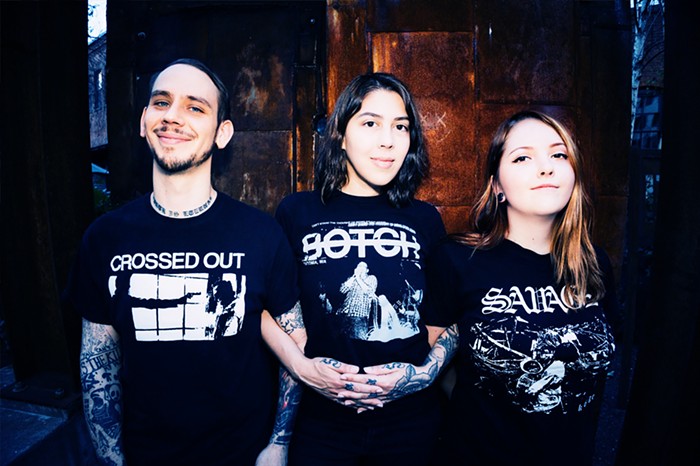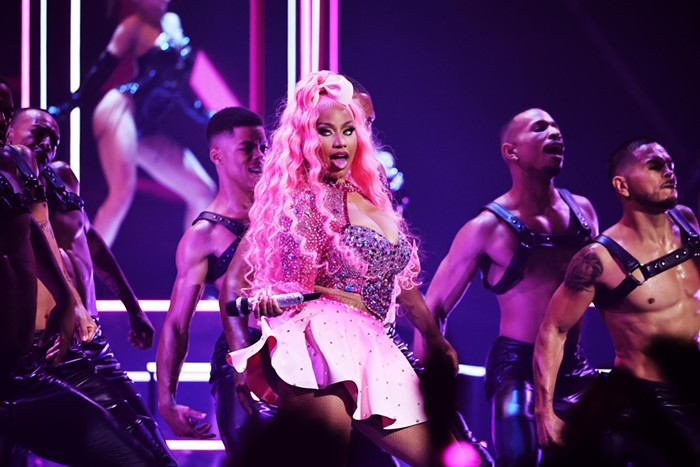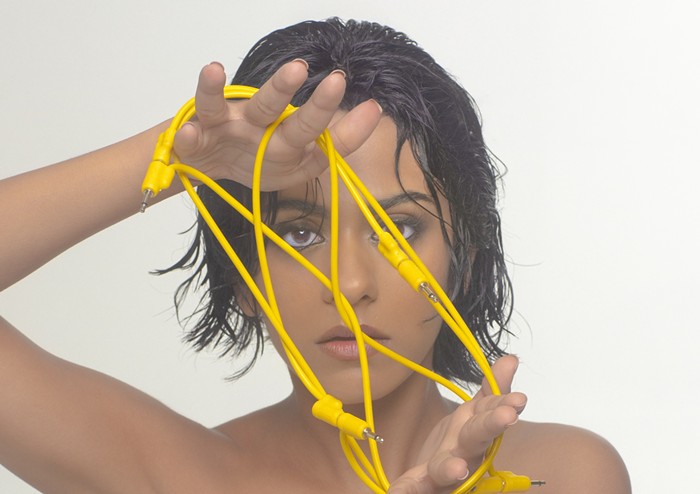On Sunday, March 24, Seattle Art Museum will unveil MIRROR, a new permanent installation created by Los Angeles–based conceptual artist Doug Aitken. The main component of MIRROR is a horizontal LED display that wraps around the northwest corner of SAM, projecting images that dissolve and flow into narrow columns of light running up and down the building's face. The images come from an archive of video footage Aitken shot in Seattle and around the Pacific Northwest. Once the installation is up and running, the visual sequences will vary constantly due to sensors that detect changes in the building's surroundings, such as weather, traffic, and light.
MIRROR was commissioned by Bagley Wright before his death last year. Wright and his wife, Jinny, collaborated with Aitken, aiming to transform the museum's facade into an urban earthworking mirror that reflects the changing rhythms of the city. For MIRROR's unveiling, First Avenue downtown will be blocked off and lined with food trucks, and there will be performances of pieces by minimalist composers Steve Reich and Terry Riley (the 77-year-old Riley will be on hand, conducting), which will be synchronized to the installation. Aitken spoke over lunch at the Athenian in Pike Place, overlooking Elliott Bay and the peristalsis of the Great Wheel.
What was the very first thing you did for this project?
The initial idea was unorthodox. How do we create this thing that can change? That's when I realized there wasn't a lot of visual art that I could use as a stepping-off point—I couldn't look at a Bruce Nauman sculpture, for instance, or a Mondrian painting and say, "This relates to what we're trying to do here." So I wound up looking at the structure of minimalist music, and that became the framework I used to create this. When I looked at reductive music like La Monte Young, or Terry Riley, or Steve Reich—pieces that are continuously reduced down to modal structures and repetitious patterns—I realized that's the way we needed to design this work. We needed to create an invisible system that could relate to and mirror what's happening around it, like a living composition.
Where were some of the places you shot footage for MIRROR?
The footage covers a wide spectrum of landscapes and approaches, from complete abstraction to representational images. I ended up filming everything myself—I started at SAM and made five radial rings outward, all the way out to the Olympic Peninsula and the Pacific Ocean. The rings mapped out different areas of the landscape—some very natural with few signs of human habitation, others where you find you're completely inside the concrete grid. In downtown Seattle, for instance, things are black and white—there are crosswalks and intersections; the tempo of the walk light at the intersection has a certain rhythm, the cadence of feet walking en masse at lunch.
What did you think of the Washington Coast?
I really liked it out there. I had to reconsider how I shot it, because it wasn't the sort of thing you could film like cinema. In cinema, you're often following a character, and one thing leads to another, then another—you're shooting transitions. You move through a script, and it's finished. With this, the project was never finished; there's no protagonist, the landscape has to be the language. What that means, in a sense, is that if you take anything and hit it repetitiously [hits table repetitiously], a rhythm surfaces and becomes the skeleton, the framework. I used editing to create this invisible rhythm—how often shots are replaced by other ones, how often a shot repeats. It kind of lets the work have its own internal time code or pulse. And that's where it gets back to musical structure.
Because it doesn't need to be cinematic, you can slow down and let your eye really look at something. There might be a really slow-moving shot lasting 30 minutes or an hour, and that's okay—that could never exist in other areas of moving image. But here, maybe you walk by SAM, go have lunch, then walk by again after, and the image has changed just a little bit. Then there are other moments where it becomes really abstract and staccato [hits table again, this time quicker, mimicking staccato] like a Stan Brakhage film. Moving, smeared light and colors creating their own tempo and rhythm.
[Pause to eat lunch. My eggs Benedict looks like a face. The yolk-eyes stare out blankly. I pepper them. Aitken has a French dip. He eats, and talks, never chewing with his mouth open.]
The strange thing is that the piece is going to exist in such a way that I don't think anyone will be able to see the entire work. And that's what I'm after. I like that challenge [laughs]. I don't think people need to go into an institution, inside a white gallery, to see a work. I became interested in the legacy of people creating urban earthworks—people like Michael Heizer, Robert Smithson, James Turrell—their pieces are very much about the place that the viewer does not live. They're about the journey to reach that remote place to encounter that sculpture or invention. With MIRROR, I was more interested in the idea of using the landscape right around here. Let's use a street that you might pass by every day, or something that you see out of the corner of your eye. That requires you to make a different kind of language.
Will there be cameras faced out from SAM? Will people walking by be able to see themselves on the screen?
No, I wanted to remove that. I don't want it to be technology, where it's cause and effect. I want it to be much more abstract. A person looking at it might not know why a certain image is being used, but the images are sensing things around you. The building is able to sense its environment—maybe it's the temperature of the wind, or atmospheric fluctuations.
It's interesting talking to you specifically about this because it's an artwork that can be described through musical structure more than through visual art. I think we're coming into this very interesting era where the divisions between different sectors of culture aren't so strict—like you, you play drums and you write. Or someone may be a playwright, but they're also a tag artist. The walls that divide these partitions of culture are slowly vanishing, and I think that's a positive thing.
What were some of your initial ideas that went into making MIRROR?
I became really interested in this idea because it goes against the way a lot of people view art: "It's art when it's hanging on a museum wall, and it's frozen." Then you calibrate whether you like it or dislike it, if you relate to that work. You're in flux and the object is frozen. This idea challenges that. The art is living on its own—it's never really consumable. I wanted to see if aspects of this frozen, formal building could reflect and refract that which is around it.
We were talking about your tools, and what your tools are. Here, it's a video camera, the screen. Your medium is technology.
If I had my way, this MIRROR project wouldn't just be low-tech, it would be no-tech. I'd like for the technology to be invisible—not something that appears digital or computer-generated. It's more like a survey we've been gathering for a few years using the moving image camera, but filming them in a way that's not really documentary. We were using the camera to survey an essence, a certain aura, then we created sort of a library out of the footage.
I think another one of your tools is organizing and effectively communicating during the creative process. Some artists use a brush and canvas, some use a chisel, or a chain saw with ice sculpture, but you use communication. How do put your ideas out there so other people can latch onto them?
I do like ice [laughs]. Communication is, like you say, another version of the paintbrush or an instrument to me—something I do to actualize the ideas. I think that just comes out of necessity. You have to find a way to bring certain things into form—to take them from your head and put them into existence, so they can be shared. You believe in things, we're not going to be here that long. I want to make them happen.
Ice sculpture came up earlier. When will the Doug Aitken Chainsaw Ice Sculpture Happening occur? Clearly, that's next. What would you sculpt out of ice?
A margarita. ![]()



















